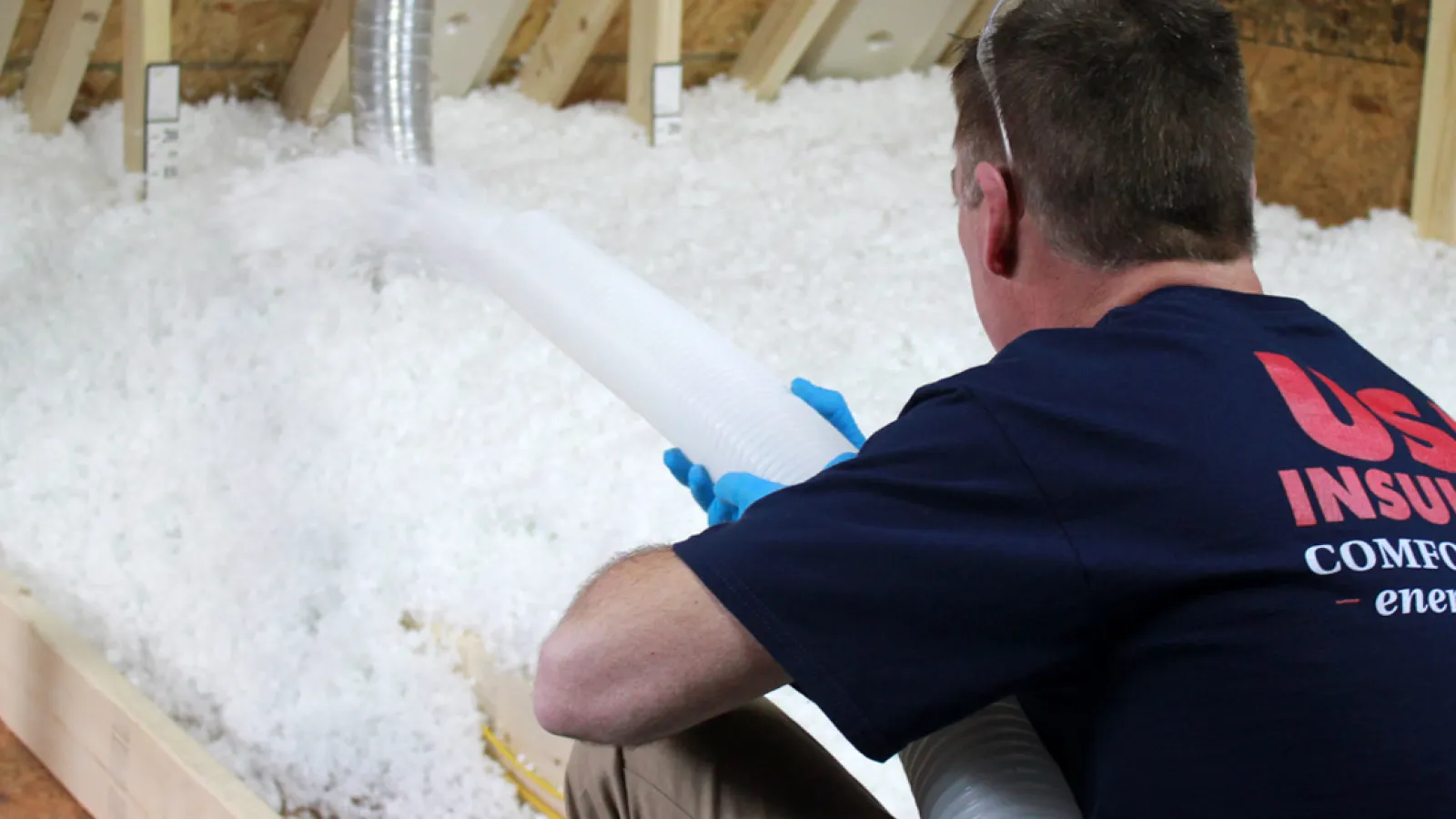When temperatures in your home are inconsistent, one option to consider is adding blown-in insulation to the attic, creating a heavy blanket of protection against leaking rising heat in the winter and preventing heat from radiating in from your roof in the hot summertime to keep your home cool. By ensuring that your home has sufficient attic insulation, you can lower your utility bills and your home will be much more comfortable. Rather than being in a single piece like insulation batts or spray foam insulation that fills an open area but at a higher cost, blown in insulation is a loose-fill product that provides a cost-effective option for your home’s attic insulation.
Blown in insulation for your attic is installed a bit differently than other types of insulation. Unlike batts, which are in one piece, blown-in attic insulation provides you with a blanket of loose-fill insulation, allowing for a perfect fit into a range of different spaces in your attic. It provides free access to lighting, wiring and similar infrastructure, making it easy to temporarily move the insulation out of your way for maintenance and repairs, and then you can simply move the insulation back into place to keep your home comfortable.
The Attic Insulation Installation Process
We start with a thorough inspection to check what type of insulation you already have in place and make a plan to determine how much more insulation will need to be added. We also take the time to check whether your attic’s baffles, or ventilation that keeps fresh air circulating through your roof system, are of sufficient height and in good repair to ensure this vital air circulation continues after the installation is complete.
When blown-in attic insulation is installed, it’s placed into a hopper which breaks up compressed insulation, and a blower then pushes the small, broken-up pieces of insulation through a large hose to the installer in the attic. The installer can control how quickly or slowly the insulation flows, ensuring the insulation doesn’t become packed in too tightly—it’s the loose fill of the insulation that provides the insulative value of the material. A second individual at the other end of the machine keeps the hopper loaded with insulation so that the process can be completed quickly.
Types of Blown-In Attic Insulation
- Cellulose is a common material using plant fibers and recycled paper, often treated with fire retardant and mold inhibitors. It’s one of the oldest types of insulation still widely used, with a history going back to a time when settlers would stuff the walls of their homes with old newspapers and similar materials to help keep out drafts.
- Fiberglass blown-in insulation uses super-thin glass strands to form a fine, flexible material. If you’ve ever worked with insulation batts, there’s a very good chance that the material you were working with was fiberglass. However, rather than being in a blanket or batt form, blown-in insulation is chopped into smaller pieces to travel through the hose for installation.
Insulation installation is not an easy project to do yourself. If you’re looking to install blown-in insulation, it’s best to contact a professional like USA Insulation. Whether you’re looking at a first-time installation in your newly-constructed home or to add more attic insulation to increase energy efficiency in an older home, USA Insulation can help. Contact us today through our website or call us to get a free, no-obligation estimate and discover how comfortable and energy-efficient your home can be.



